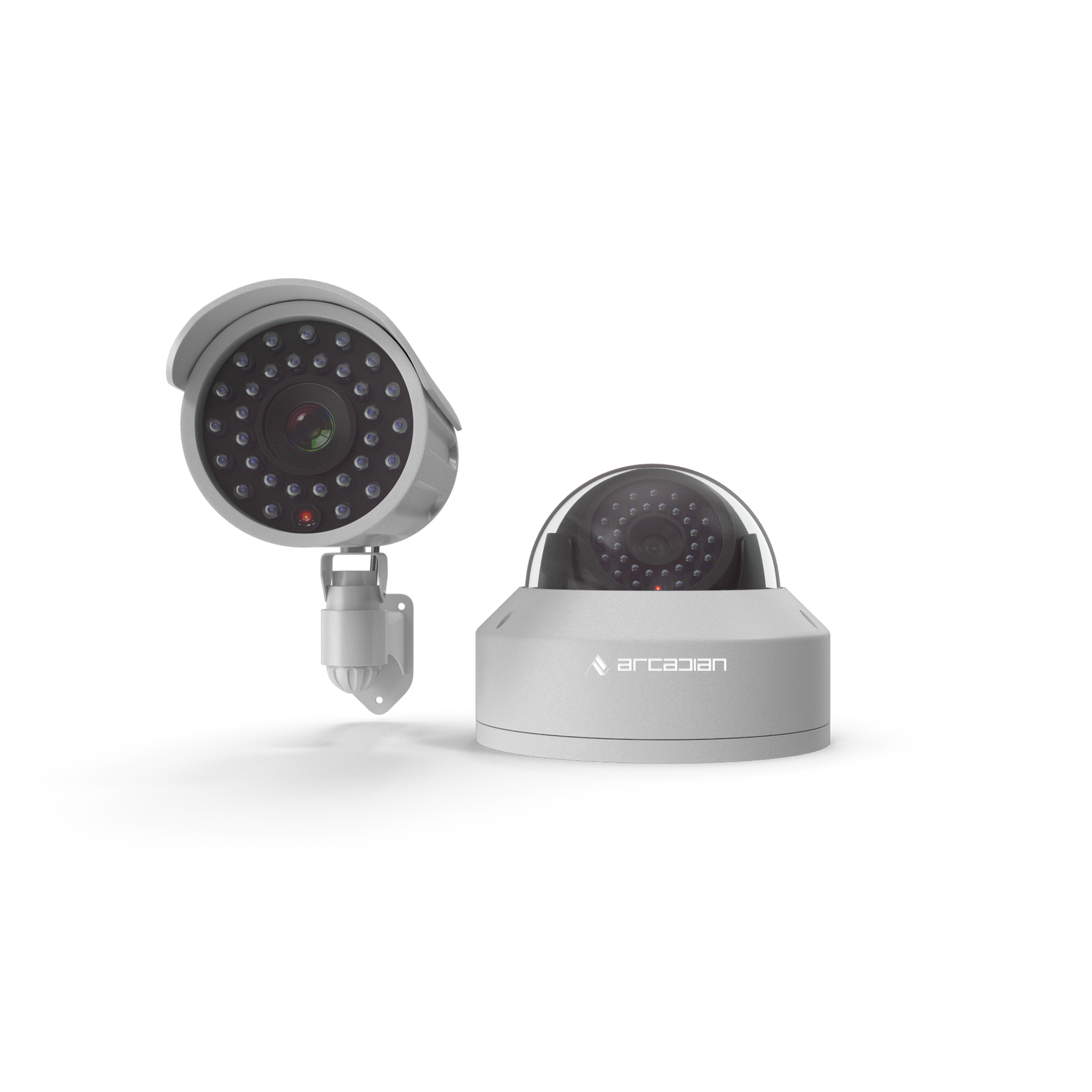From Patrol Cars to Patrol Drones: The Future of Real-Time Security Monitoring
Security is going airborne. Patrol drones and AI are transforming how we monitor, protect, and respond — with faster alerts, lower costs, and 24/7 coverage that guard patrols can't match.

- Why the Future of Security Doesn’t Have Four Wheels
- TL;DR: Key Takeaways
- Background & Relevance
- The Evolution of Patrol: From Human to Machine
- Patrol Drones & Autonomous Surveillance
- Real-World Comparisons
- The AI Advantage: Why It Matters
- Cost-Efficiency Breakdown: 3-Year ROI
- Comparisons & Use Cases
- Common Questions (FAQs)
- Conclusion: The Sky Isn’t the Limit — It’s the New Perimeter
- Call to Action
Why the Future of Security Doesn’t Have Four Wheels
For over a century, the gold standard in physical security has been the human patrol: security guards making rounds, responding to alarms, and acting as the frontline defense for private property, public spaces, and critical infrastructure. Whether on foot or in a vehicle, guards have been a visible deterrent and essential presence.
But the world has changed — and so has the threat landscape.
Enter autonomous patrol drones and AI surveillance. These smart machines aren't just futuristic gimmicks — they’re actively replacing patrol cars in industries ranging from energy to logistics to city security.
Why?
Because they're cheaper. They're faster. They don't take breaks. And when combined with AI video analytics, they offer a level of coverage, insight, and real-time responsiveness that human patrols simply cannot match.
This blog post dives deep into how patrol drones are reshaping the security landscape, what makes them superior in many use cases, and what it means for companies, cities, and security firms still relying on outdated models.
TL;DR: Key Takeaways
-
Drone patrols are more cost-effective than vehicle-based guard patrols, saving thousands monthly in salaries, fuel, and maintenance.
-
AI + drone surveillance offers real-time anomaly detection, reducing false alarms and improving responsiveness.
-
24/7 coverage with minimal downtime is possible using autonomous drones, unlike human-dependent schedules.
-
Industries like oil & gas, ports, campuses, and logistics are early adopters, seeing ROI within months.
-
Traditional security providers must adapt or risk being disrupted.
Background & Relevance
A Brief History of Guard Patrols
Security guards have patrolled properties since ancient times. In the modern era, vehicle patrols became common as facilities grew in size and complexity.
-
1950s–1990s: Foot patrols evolve into vehicle patrols for large properties.
-
2000s: NVRs and video surveillance add passive eyes, but not active response.
-
2020s: AI and drones enter the scene, bringing speed, autonomy, and intelligence.
Today’s Security Challenges
-
Staffing shortages in the security industry
-
Rising costs of labor, insurance, and fuel
-
Increased demand for remote, after-hours monitoring
-
Complex threats requiring rapid situational awareness
Traditional patrol cars are no longer agile enough for this new reality.
The Evolution of Patrol: From Human to Machine
Traditional Guard Patrols – The Old Standard
Strengths:
-
Human intuition and judgment
-
On-site presence acts as deterrent
-
Can intervene physically if needed
Weaknesses:
-
Expensive (average patrol guard costs $20–$35/hour)
-
Limited coverage (only one place at a time)
-
Human fatigue, distractions, and errors
-
Slow response unless already near an incident
Costs:
| Item | Monthly Cost (Avg) |
|---|---|
| Salary for 2 guards (24/7) | $25,000 – $35,000 |
| Vehicle lease & fuel | $1,000 – $3,000 |
| Insurance & benefits | $3,000+ |
| Equipment & training | $1,500+ |

Patrol Drones & Autonomous Surveillance
The Disruptive Upgrade
Autonomous patrol drones are equipped with thermal cameras, night vision, AI object detection, and real-time alert capabilities. Most can follow pre-set routes, avoid obstacles, and return to charge on their own.
Strengths:
-
Autonomous 24/7 patrols with pre-programmed flight paths
-
Zero fatigue, consistent operation
-
Covers large areas faster than foot or vehicle patrols
-
AI-assisted alerts reduce false positives
-
Records and reports incidents with geolocation
Weaknesses:
-
Initial hardware cost (but rapidly falling)
-
Regulatory hurdles (airspace, privacy laws)
-
No physical intervention (but excellent for deterrence)
Costs:
| Item | Monthly Cost (Avg) |
|---|---|
| Drone lease (1–2 units) | $1,000 – $2,500 |
| Software & AI monitoring | $500 – $2,000 |
| Maintenance & insurance | $300 – $800 |
| Operator/supervision staff | Optional (remote only) |
Savings Potential:
💡 Up to 80% cost savings over traditional guard patrols.
Real-World Comparisons
Guard Patrol vs Drone Patrol – Use Case Breakdown
| Feature | Guard Patrol | Drone Patrol + AI |
|---|---|---|
| Cost | High (labor intensive) | Low (automated) |
| Area Coverage | Limited | Large per flight |
| Response Time | Delayed if off-site | Instant alerting |
| 24/7 Operation | Requires shifts | Autonomous |
| Surveillance Accuracy | Human eyes only | AI-powered detection |
| Evidence Collection | Manual | Cloud-synced video |
| Fatigue Risk | High | None |
| Deterrence Factor | Medium | High (visible drones) |
Industry Applications
Oil & Gas Sites
-
Challenge: Remote, vast areas prone to theft and sabotage
-
Solution: Drones patrol pipelines and sites, sending real-time alerts
-
Example: Percepto drones at Chevron locations
-
ROI: Reported 70% reduction in manual patrol costs
Industrial Warehouses
-
Challenge: Nighttime intrusion and false alarms
-
Solution: Drones patrol perimeters; ArcadianAI monitors video with Ranger AI
-
Result: Human guards reduced by half, with better coverage
Municipal Surveillance
-
Challenge: High-crime neighborhoods and public parks
-
Solution: Police departments use drones for crowd and incident monitoring
-
Example: Chula Vista PD’s Drone-as-First-Responder program
The AI Advantage: Why It Matters
Adding AI transforms drone patrols from passive flight to proactive intelligence.
Ranger by ArcadianAI: The Human-Free Monitoring Assistant
ArcadianAI’s Ranger operates like a 24/7 analyst. Here’s how it works:
-
Video from drones or static cameras streams to Ranger
-
Ranger analyzes frames for unusual patterns — loitering, perimeter breach, object removal, etc.
-
It sends contextual alerts to security teams or mobile apps
-
Footage is stored for review, flagged, and searchable
Use Cases with Ranger:
-
AI detects an unauthorized vehicle entering a logistics yard
-
Drone records footage; Ranger classifies it as a threat
-
Manager receives alert instantly with video & location
-
Action taken in under 60 seconds
That’s what true real-time monitoring looks like.
Cost-Efficiency Breakdown: 3-Year ROI
Let’s say you’re securing a 10-acre facility.
Option A: Traditional Guard Patrol
-
2 full-time guards: $420,000/year
-
Patrol vehicle: $36,000/year
-
Total (3 years): $1.37M+
Option B: Drone + AI Monitoring
-
2 patrol drones: $30,000 upfront or $2,000/month
-
AI platform: $1,500/month
-
Maintenance & support: $500/month
-
Total (3 years): ~$126,000 – $150,000
Savings Over 3 Years:
💰 Over $1.2M
Comparisons & Use Cases
Comparison Table: Drones vs Major Guard Companies
| Security Company | Patrol Model | AI Integration | 24/7 Drone Use | Avg Monthly Cost |
|---|---|---|---|---|
| GardaWorld | Human patrols | Partial (analytics) | No | $15,000+ |
| Securitas | Guard + mobile patrols | Basic VMS | No | $18,000+ |
| Paladin Security | Manual guards | None | No | $12,000+ |
| ArcadianAI + Drones | AI + autonomous patrol | Full (Ranger) | Yes | $2,500 – $5,000 |
🟢 ArcadianAI and drone vendors are clearly positioned to disrupt.
Common Questions (FAQs)
Are drones legal for security patrols?
Yes, but subject to airspace regulations. In Canada and the U.S., drones must be registered and operated by certified pilots for commercial use unless fully autonomous under specific weight and distance thresholds.
Can drones detect crimes in progress?
Yes. With thermal and visual AI, drones can detect loitering, breaches, or unusual movement and trigger alerts in real time.
What happens if a drone is tampered with or damaged?
Advanced drones include GPS tracking, tamper alerts, and automatic return-to-base protocols. Redundancy in the fleet ensures continued coverage.
How do drones handle night surveillance?
Thermal cameras and IR capabilities make drones ideal for night patrols — often outperforming humans with flashlights or vehicle beams.
Conclusion: The Sky Isn’t the Limit — It’s the New Perimeter
In the race for faster, smarter, and more cost-effective security, patrol cars are quickly becoming relics of the past. AI-powered patrol drones offer better coverage, faster response, and massive savings — all while feeding intelligent systems like ArcadianAI's Ranger that think, analyze, and alert without human delay.
Security companies that adapt to this shift — embracing autonomy, cloud platforms, and AI surveillance — will lead the next decade. Those that don’t? They risk going the way of VHS tapes and dial-up alarms.
If your facility, warehouse, or remote site still relies on vehicle patrols, it’s time to look up.
Because the future of real-time security isn’t on four wheels — it’s in the air.
Call to Action
Want to reduce costs, increase coverage, and upgrade your security to the 21st century?
👁️🗨️ Schedule a live demo of ArcadianAI + drone integration today:
👉 Get a Demo Now

Security is like insurance—until you need it, you don’t think about it.
But when something goes wrong? Break-ins, theft, liability claims—suddenly, it’s all you think about.
ArcadianAI upgrades your security to the AI era—no new hardware, no sky-high costs, just smart protection that works.
→ Stop security incidents before they happen
→ Cut security costs without cutting corners
→ Run your business without the worry
Because the best security isn’t reactive—it’s proactive.







